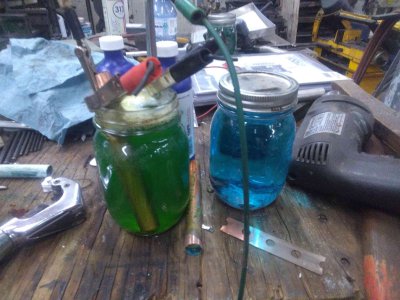- Joined
- Dec 15, 2018
- Messages
- 816
Thanks for confirming my fears on using the acid solution. A disaster narrowly avoided.
The caswell kits would be nice but way too expensive for a science experiment.
They carry acid and alkaline based kits, some of the sites I looked at used baking soda to make the electrolyte, guessing they would be the alkaline variety?
The one video on caswell's site showed the effect of too much voltage, almost seams like what I'm experiencing. Did try with a D cell, 1.5 volts, but appeared they were only using .5 volt. Need a proper power supply.
Off to buy some hydrogen peroxide, then make the next attempt.
With the vinegar based solutions I can smell them in the shop while applying power. Should I be worried about corrosion from it?
Thanks for the input
Greg
The caswell kits would be nice but way too expensive for a science experiment.
They carry acid and alkaline based kits, some of the sites I looked at used baking soda to make the electrolyte, guessing they would be the alkaline variety?
The one video on caswell's site showed the effect of too much voltage, almost seams like what I'm experiencing. Did try with a D cell, 1.5 volts, but appeared they were only using .5 volt. Need a proper power supply.
Off to buy some hydrogen peroxide, then make the next attempt.
With the vinegar based solutions I can smell them in the shop while applying power. Should I be worried about corrosion from it?
Thanks for the input
Greg


